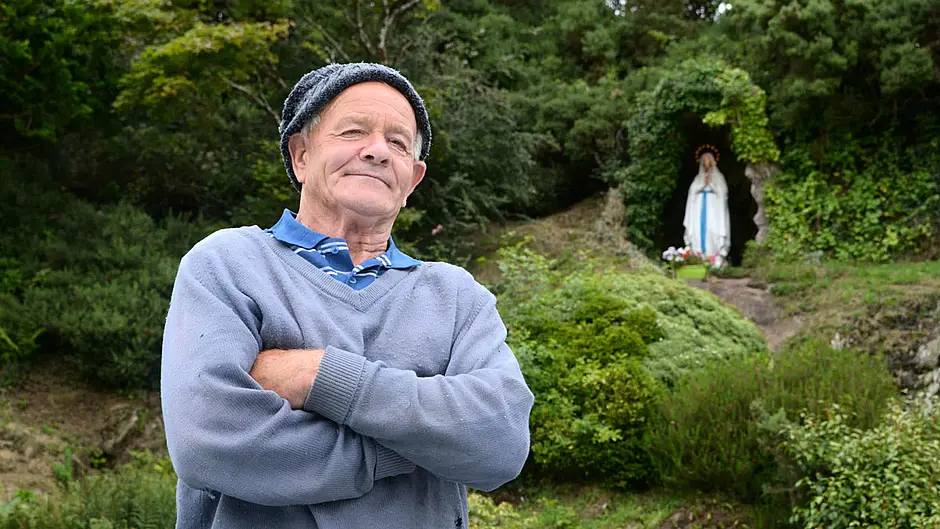This month, 35 years ago, the story of the moving statue of Ballinspittle travelled the world. This week villagers recalled the grotto’s heyday, and noted that the site is still a place of pilgrimage for many
BALLINSPITTLE, the pretty little village near Kinsale, was put on the world map 35 years ago this summer when locals reported seeing the statue of Our Lady ‘moving’ at the local grotto on July 22nd.
What followed next was a summer never to forget as thousands of people flocked to the West Cork village, carrying rosary beads (and umbrellas) to pray – and hoping to catch a glimpse of the ‘moving statue’.
It was the era of the ‘Grotto Burger’ as several chip vans pitched up for the summer, feeding the hungry masses, while coaches of buses choked up the little village and accommodation was in high demand from Kinsale to the city and beyond.
Of course, Ballinspittle wasn’t unique in the moving statues league, as Ireland found itself gripped with reports of statues of Our Lady swaying all over the country.
The West Cork village may have been one of the most high profile examples, but there were over 30 reports of moving statues nationwide, all vying for public attention in what was a truly miserable, but remarkable summer. The world’s media were quickly on the case and locals even featured on the BBC’s Newsnight when the landmark programme reported on the moving statue of Ballinspittle. And in 2010, TV presenter Terry Wogan even visited the grotto to record a piece about it for a BBC show.
With crowds arriving nightly to the grotto in 1985, road improvements, toilets and parking were all needed to cater for the huge numbers coming to pray and reflect. The local Grotto Committee found themselves having to co-ordinate everything, such was the growing interest from people wanting to visit the grotto.
The peak occurred when, on August 15th, over 20,000 people descended on the village to pray during the Feast of Our Lady’s Assumption.
While it never again reached the dizzy heights of those crowds, people continued to visit the grotto months afterwards, but by autumn interest had dwindled – not just in Ballinspittle – but across the country.
Sceptics dismissed the notion that the statue moved and suggested several scientific reasons as to why people said they saw it move.
There was consternation in October of that year when three men wielding axes and hammers attacked the statue of Our Lady in front of a number of people.
The men – who were all members of the Christian Faith Centre in Ireland – said their mission was ‘the elimination of all false idols from Ireland’. They later escaped a conviction for the attacks in court.
Thankfully, the statue was restored by the man who made the original and, according to locals, it was back moving again!
The book Ballinspittle Grotto and The Moving Statue – researched and written by members of the Grotto Committee – was published in 2015 to mark the 30th anniversary and last year the RTÉ documentary Moving Statues explored the phenomenon and created a renewed interest in what had gripped the country 35 years earlier.
When the Star visited recently to photograph the grotto, we met Patrick Joseph Simms who looked after the grotto then, and is still the caretaker. Patrick happily posed for our photos.







